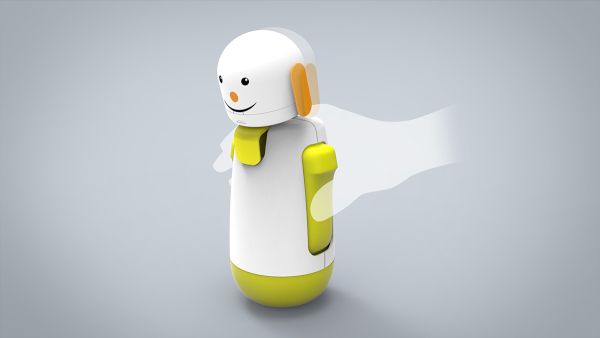Autistic children face difficulties forming relationships and have communication problems, so parents are always on a lookout for ways that can help them dealing with such problems with ease. It seems product designer Jonathan Li understood the desire of many parents and came up with BUDDY.
BUDDY – an interactive therapy toy

BUDDY has been designed to smooth the process of social interaction between autistic children and their parents, which otherwise is not a cakewalk. Such children face a delayed development of social communication skills because they are unable to focus on their surroundings and on the conversations. Trying to help autistic children and their parents, Jonathan Li’s project strives to improve emotion recognition and joint attention in children.
He has tried his best to make the product effective, fun and simple to use by both children and parents. If brought into use every day, children can learn social interactions, improve their relationship with their parents and family members, and will be well prepared for the future challenges in their life. BUDDY makes things easy for autistic children and their parents by offering following three integral functions:
Joint attention and emotion recognition

Autistic children prefer interacting to objects over human interactions because it makes them anxious. BUDDY serves as one object that enables parents teach their autistic child basic emotions, sadness, anger and happiness. Interchangeable heads of BUDDY have cartoon faces depicting these emotions embedded in them. While changing heads parents can teach their child the importance of eye contact and different emotions.
Generalization

If autistic children manage to learn a few interactive skills, they usually fail to exhibit them in unfamiliar settings. BUDDY is designed to solve this problem with its series of exercise. Its online software and the process of placing photographic mask in front of the, enables them to generalize their skills. You can start with the masks of family members, cartoons and then move on to strangers. This will make your autistic child comfortable in unfamiliar settings, enabling them to exhibit their skills with confidence.
Motivative Mechanism

Motivation and appreciation is important for each one of us but they are all the more important for autistic children. This is why Jonathan Li has given BUDDY a motivative mechanism. Parents push the buttons on its side and it nods its head every time a child performs well.
BUDDY is an interactive toy that makes learning emotions and interactive skills easy and effective for autistic children.
Source : Behance.Net



